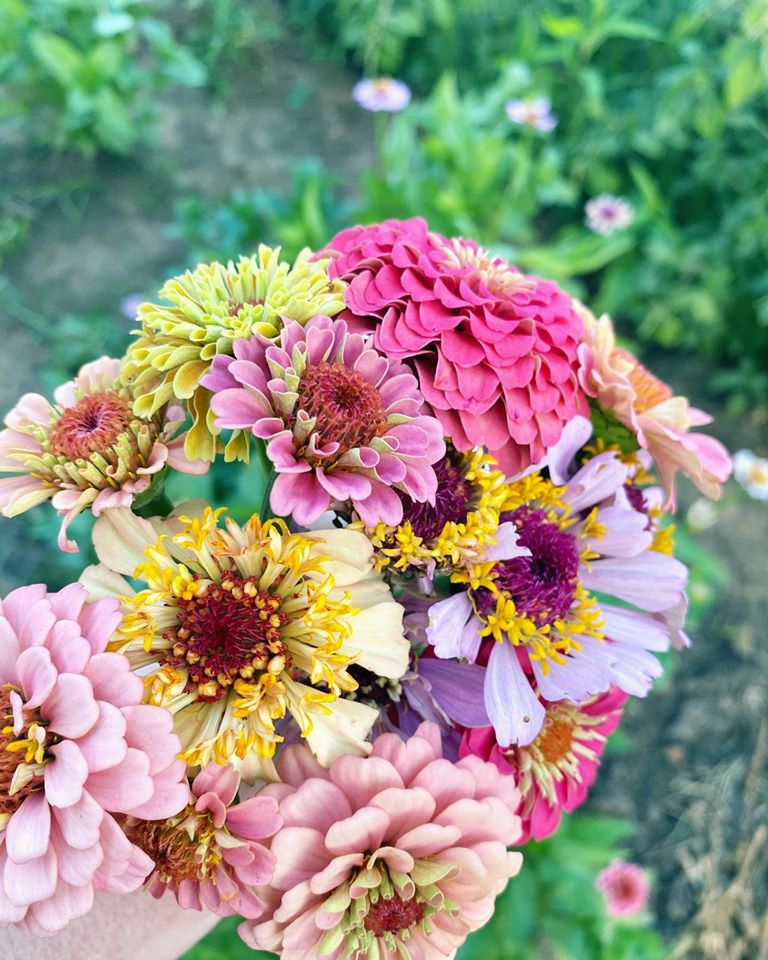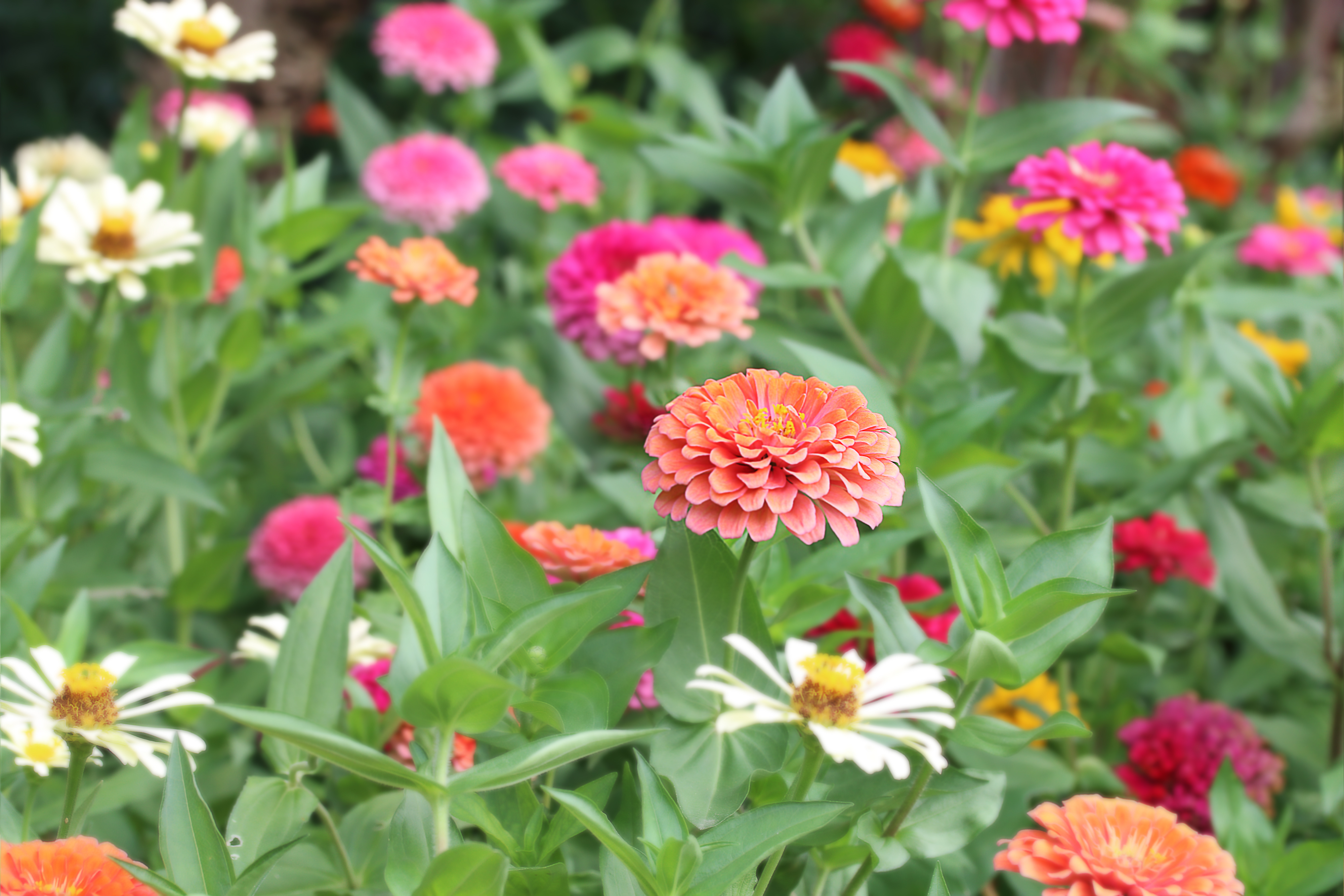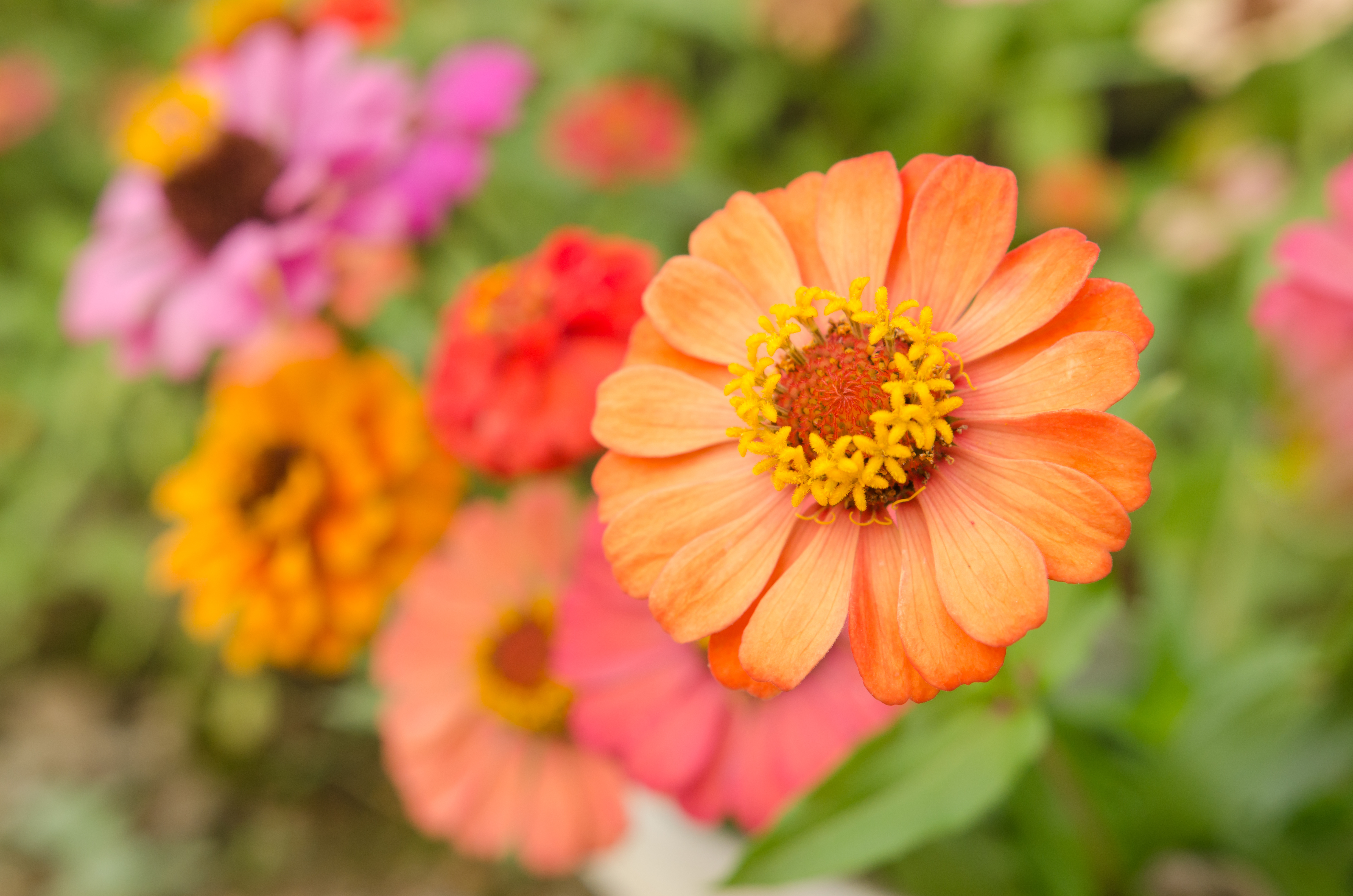Zinnias = sweet summertime.
It's the perfect summer flower to add to your gardens, containers, and vases.
They come in an incredible array of colors in all shapes, sizes, and many varieties. They are so easy to grow! They aren't fussy and are incredibly low maintenance. You can fertilize them, but you don't have to.
They are a cut and come again flower, which means you cut them, and they will bloom again. The more you cut, the more flowers will develop and bloom. They will give you a beautiful show until the first frost arrives. They are great to try as a beginning gardener but also to enjoy year after year as someone with experience.....
you can't go wrong by adding these to your garden.
Even though I've grown them for years, they still stop me in my tracks. Each flower can house so many details - they are pretty magical!
Although you can directly sow them outside once the danger of all frost has cleared and the soil is warm, I opt to start mine in my greenhouse for several reasons—the obvious, earlier blooms. But the main reason for me is due to losing entire zinnia patches from spring rains. As a result, hundreds of seeds have been washed away—more than once during the same spring. By transplanting an actual plant, they withstand those rains much better.
They can be started 4-6 weeks before the last frost. I am in Zone 7b and occasionally have very late frosts; my seed tray planting week every year beginning on April 20th. They will germinate in 3-7 days in the greenhouse. Make certain you have the area that you will transplant them in is ready to go when it's time to move them out.
If you opt to direct sow, plant them in good soil about 1/4" in-depth and cover lightly with soil and water well. They are perennial, but they will reseed themselves in certain areas and surprise you with new plants the following year.
I recommend spacing them by the seed packets instructions as this will give them their best, optimal start. Zinnias LOVE the sun and the heat that comes with it. Plant them in full sun areas, and they will be happy plants. To ensure you have blooms that last until that first frost, you can successively plant them. Some years I've done that, and some years I haven't; I still had gorgeous blooms until that first dreaded frost.
They are also a plant that you will want to pinch as soon as they reach 8-12 inches tall to encourage a bushier, more prolific plant. Who doesn't want more blooms? This can be hard to do, as you know that snip will delay your first blooms, but trust me. Pinching them back will encourage the plants' energy to be redirected to below where the cut was made. As a result, they will send off more shoots that will produce more blooms. Once they bloom in about 4-6 weeks, the more flowers you cut, the more flowers you will have.
It's AMAZING.
They have always been deer resistant for me; trust me; I have deer that are overachievers in garden destruction. The pollinators LOVE them and can give you quite the show on summery days. If you opt to keep the blooms in your garden and not cut them, make sure you do dead-head, as this can slow down bloom production if you don't.
The only negative I can think of is they can get powdery mildew. For me, that happens when I plant them too close and will show up either in late summer going into fall. The humidity, lack of hair flow, and overhead watering can contribute. Keep them watered, but not overwatered. They will start developing brown spots on their leaves.
So, plan to plant zinnias if you don't already. If you do, explore different varieties. As they've risen in popularity over the past few years, make sure you get your seeds early! Certain types and companies can sell out on their opening launch day. I tend to order certain varieties and colors; however, if you don't want to go to that trouble, just pick up a pack at a local garden center.
You won't be sorry.


.jpeg)


.jpeg)
.jpeg)

.jpeg)




.jpeg)





